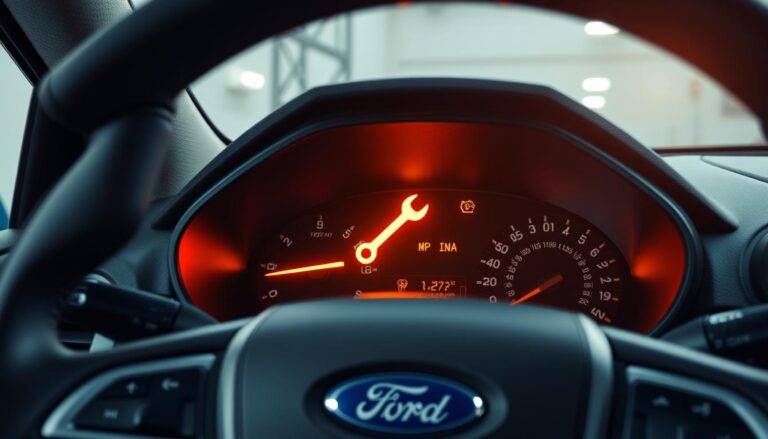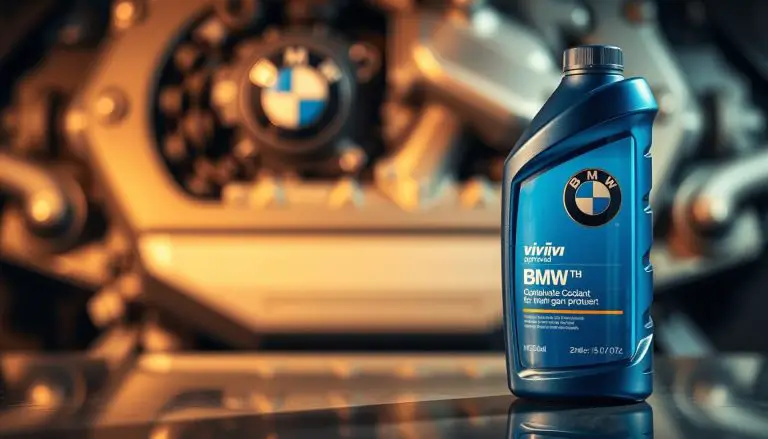The BMW brake pad warning light serves as a critical safety indicator within your vehicle, signaling the need for brake pad replacement. Grasping its importance and the necessary steps to rectify the situation is paramount for preserving your automobile’s performance and safety standards.
The activation of the brake pad warning light on your dashboard signifies that your brake pads have reached a state of wear necessitating replacement. Neglecting this warning can compromise your vehicle’s braking efficacy and may result in damage to other components of the braking system.
Key Takeaways
- Understand the significance of the BMW brake pad warning light.
- Learn how to identify when your brake pads need replacement.
- Discover the steps to address the issue and maintain your vehicle’s safety.
- Find out how to reset the brake pad warning light after replacing your brake pads.
- Explore tips for maintaining your BMW’s braking system.
Understanding the BMW Brake Pad Warning Light
The BMW brake pad warning light is paramount for vehicle safety maintenance. It is an integral part of BMW’s sophisticated brake system, alerting drivers to worn brake pads or other malfunctions.
What Does the Warning Light Look Like?
The BMW brake pad warning light manifests as a circle, either dashed or solid, often accompanied by “Brake Pad Wear” or similar messages on the dashboard. Variations in appearance may occur based on model year and BMW series.

When and Why the Light Activates
The brake pad warning light illuminates when the brake pad sensor detects significant wear on the brake pads. This sensor, embedded within the brake pad, activates the warning light upon contact with the brake disc. This signal indicates the need for brake pad inspection and potential replacement to preserve safe braking capabilities.
Differences Across BMW Models
Though the brake pad warning light’s fundamental principle is consistent across BMW models, variations exist in display information and available features. For example, newer models may offer more detailed dashboard displays, including brake pad condition and maintenance recommendations. For further details on brake service, refer to this page.
Safety Implications of Ignoring the Warning
Disregarding the BMW brake pad warning light can compromise braking efficiency, potentially leading to increased stopping distances or brake failure. Promptly addressing the issue by inspecting and replacing brake pads, if necessary, is crucial for continued safe vehicle operation.
Common Causes of the BMW Brake Pad Warning Light
The BMW brake pad warning light serves as a critical safety indicator, alerting drivers to potential braking malfunctions. Its illumination necessitates an understanding of the underlying causes.
Worn Brake Pads
The primary reason for the BMW brake pad warning light’s activation is the degradation of brake pads due to friction. This wear diminishes their efficacy over time. Proactive inspections can preemptively identify such wear, averting safety hazards. Replacing worn brake pads is a straightforward procedure that significantly improves braking performance.
Sensor Malfunction or Damage
BMW brake pads are equipped with wear sensors, which activate the warning light when pads reach a predetermined wear threshold. Yet, these sensors can fail or suffer damage, prompting the light to illuminate inappropriately. A thorough examination and, if required, replacement of these sensors can rectify this problem.

Wiring and Connection Issues
Problems with wiring and connections can also precipitate the activation of the BMW brake pad warning light. Corrosion or physical damage to the wiring can impede the signal from the wear sensors, resulting in false alarms. It is imperative to inspect the wiring and connections for any signs of deterioration or damage.
Other Potential Triggers
Various factors can also trigger the BMW brake pad warning light, including faulty brake pad wear sensors, software malfunctions, or issues with the brake control module. A detailed diagnostic evaluation is essential to pinpoint and rectify these issues.
| Cause | Description | Solution |
|---|---|---|
| Worn Brake Pads | Brake pads worn down due to friction | Replace brake pads |
| Sensor Malfunction | Wear sensors damaged or malfunctioning | Inspect and replace sensors |
| Wiring Issues | Corrosion or damage to wiring | Check and repair wiring |
BMW Brake Pad Warning Light: What It Means and What to Do
The illumination of the BMW brake pad warning light signifies a critical threshold in the wear of your vehicle’s brake pads, necessitating their replacement. This indicator is pivotal for the preservation of your vehicle’s braking efficacy.
Initial Assessment Steps
Commence by evaluating the condition of your brake pads. Inspect for signs of wear and any physical damage. Referencing your vehicle’s manual is advisable to comprehend the specific implications of this warning light for your BMW model.
Using OBD Scanners for Diagnosis
An On-Board Diagnostics (OBD) scanner is instrumental in diagnosing malfunctions in your BMW’s brake pad sensor. By linking the scanner to your vehicle’s OBD port, you can access error codes that pinpoint the issue. This is invaluable when the warning light is triggered by a sensor malfunction rather than brake pad wear.
DIY vs. Professional Repair: Cost Comparison
Replacing brake pads presents a dichotomy: you can opt for a DIY approach or seek professional assistance. The DIY route is economical, with parts ranging from $100 to $300. Professional labor, on the other hand, can vary from $100 to $300, contingent upon the workshop and location. Your decision should be guided by your proficiency in the repair and the associated costs.
When to Seek Professional Help Immediately
In certain instances, professional intervention is not merely advisable but imperative. If you are uncertain about the diagnosis or lack confidence in DIY repairs, consulting a professional mechanic is advisable. Further, if the brake pad warning light is accompanied by grinding noises or vibrations during braking, immediate professional assistance is crucial.
Step-by-Step Guide to Fixing BMW Brake Pad Issues
The rectification of BMW brake pad malfunctions is a task that, when dissected into its constituent parts, reveals a straightforward methodology. This exhaustive guide aims to elucidate the requisite procedures, ensuring the optimal functionality of your BMW’s braking apparatus.
Safety Precautions and Preparations
Initiation of any repair necessitates adherence to paramount safety protocols. It is imperative to don protective attire, encompassing gloves and safety spectacles. Concurrently, ensure your BMW is situated on a level terrain and that the parking brake is engaged.
- Wear protective gear.
- Ensure the vehicle is on a level surface.
- Apply the parking brake.
Tools and Materials Needed
Replacement of your BMW’s brake pads necessitates a specific array of tools and materials. A lug wrench, jack, jack stands, and the requisite brake pads are indispensable. The inclusion of a torque wrench for precise tightening is also advisable.
Inspecting Your Brake Pads
Brake pad inspection is a critical juncture in determining the necessity for replacement. Vigilance for signs of wear, such as diminution or irregular wear patterns, is paramount. If the brake pads exhibit wear exceeding the manufacturer’s minimum thresholds, their replacement is imperative.
Replacing Worn Brake Pads
The process of replacing worn brake pads entails the removal of the wheel, caliper, and the obsolete brake pads, followed by the installation of new ones. This procedure exhibits slight variations between the front and rear brake pads.
Front Brake Pad Replacement Process
Initiation of the front brake pad replacement commences with the removal of the front wheel. Subsequently, the caliper piston must be retracted using a caliper wind-back tool. The caliper is then removed, allowing for the extraction of the old brake pads and their substitution with new ones. For a comprehensive elucidation of the front brake pad replacement process, reference to specialized forums is recommended.
Rear Brake Pad Replacement Process
The rear brake pad replacement procedure mirrors the front, albeit with the potential requirement for an electronic brake pad reset tool to retract the caliper piston, a necessity in BMWs equipped with electronic parking brakes.
Resetting the Warning Light After Repair
Post-replacement of brake pads, resetting the brake pad warning light is crucial. Utilization of an OBD-II scanner that accommodates BMW-specific functionalities is typically required. Adherence to the scanner’s directives will facilitate the resetting of the warning light, ensuring the system’s correct operation.
Adherence to these directives will enable the efficacious rectification of your BMW’s brake pad malfunctions, thus ensuring vehicular safety on the road. For complexities or uncertainties in the process, professional consultation is advisable to circumvent potential risks.
Conclusion
The imperative of addressing the BMW brake pad warning light cannot be overstated, as it directly impacts the vehicle’s braking efficacy and safety. The elucidation of the warning light’s significance, coupled with the identification of prevalent causes and the rectification of these issues, constitutes the bedrock of BMW brake maintenance.
A concise recap underscores the criticality of immediate response to the illumination of the brake pad warning light. The preventive measures of routine inspections and the timely replacement of deteriorated brake pads serve to avert more critical malfunctions. The employment of appropriate tools and adherence to safety protocols are indispensable, whether undertaking DIY repairs or seeking professional intervention.
Through a commitment to proactive BMW brake maintenance, drivers can guarantee a secure driving environment and extend the longevity of their vehicle’s braking apparatus. The regularity of maintenance not only fortifies safety but also augments the overall performance of the BMW.
FAQ
What does it mean when my BMW brake pad warning light comes on?
The illumination of the BMW brake pad warning light signifies that the brake pads are in a state of wear, necessitating their replacement. This safety indicator is critical, serving as a warning of potential braking malfunctions.
Can I continue driving my BMW if the brake pad warning light is on?
Though it is permissible to operate your vehicle with the warning light activated, it is advisable to address the issue promptly. Ignoring the warning can compromise braking efficacy, escalating the risk of vehicular accidents.
How do I reset the BMW brake pad warning light after replacing the brake pads?
To deactivate the warning light post-replacement, an OBD-II scanner is typically employed. Consult your owner’s manual for precise instructions, as the procedure may differ based on your BMW’s model.
What are the common causes of the BMW brake pad warning light coming on?
The warning light’s activation is often attributed to worn brake pads, sensor malfunctions, or damage. Other contributing factors include wiring and connection issues, as well as electrical system malfunctions or brake pad wear sensor failures.
Can I replace my BMW brake pads myself, or should I seek professional help?
While DIY brake pad replacement is feasible, it is advisable to engage professional assistance if you are uncertain or lack experience. Inadequate installation can pose significant safety risks.
How often should I check my BMW brake pads?
Regular inspections of your brake pads are recommended every 10,000 to 15,000 miles, or as indicated in your owner’s manual. This proactive measure helps maintain their condition and prevents the warning light from illuminating.
Are there any differences in the BMW brake pad warning light across various models?
Yes, the visual and functional characteristics of the brake pad warning light can diverge across different BMW models. It is imperative to consult your owner’s manual for model-specific guidance on this critical safety feature.


